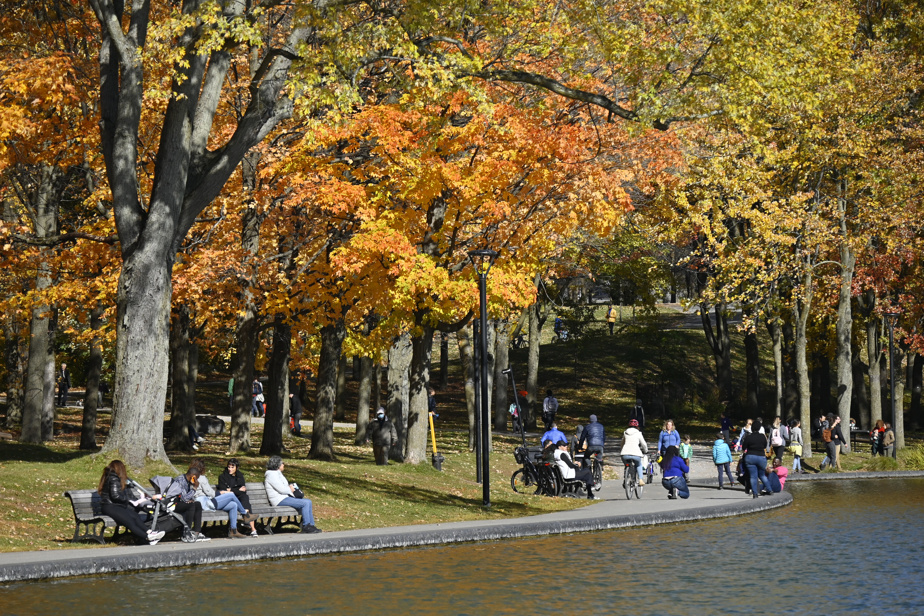In the heart of the forest, a winding path leads us near a large maple tree. With its broad trunk and its branches deployed like open arms, it commands as much respect as it welcomes. At the very top, a barred owl has made its nest there!
If you frequent Mount Royal, you may have had the chance to see this owl and appreciate the beauty of this natural environment, a real gem for the people of Montreal. By observing carefully, you will surely have also noticed that the mountain is damaged in several respects and that it is waging an exhausting fight against enormous pressures coming from all sides.
While our increased use of the Mountain is a sign of success in terms of its attractiveness and a growing need for close access to nature, the lack of beacons and protection is problematic.
In recent years, informal trails have multiplied, which requires rapid intervention by the City of Montreal to stop the bleeding. Our excessive trampling deteriorates the soil and leads to erosion problems weakening the vegetation, thus opening the door to diseases, harmful insects and invasive plants.
At the perimeter of Mount Royal, residential, commercial and institutional developments are gradually eating away at this already reduced and fragmented territory. Finally, climate change brings increasingly intense heat waves and prolonged droughts under which scattered nature loses its diversity and perishes.
This is not to mention the episodes of ice, which damage the entire canopy. We saw that last week.
We must act quickly
Despite the attribution of heritage site status in 2015 and despite the efforts of many organizations to protect the mountain, the natural environments are deteriorating from year to year. In December, during COP15, we welcomed the announcement of the expansion of Mount Royal Park and the reduction of mineralized areas, in particular the parking lots of the Smith House, but we consider its timetable too long. This plan, initially encouraging, will indeed take 20 years to materialize. We need to do more and faster!
The political class has the capacity to be agile and to inspire us. Consider the Grand Parc de l’Ouest project, which will eventually cover more than 3,000 ha in the West Island of Montreal. All this thanks to the strong political will of the municipal administration and the mobilization of civil society for the protection of the natural environments of this unique ecosystem in an urban environment.
A clear plan
Science is clear on the subject: wooded areas and natural environments are islands of freshness and real lungs within cities. They are essential in order to strengthen the resilience of our living environments in the face of the impacts of climate change.
At the current rate of climate change, Montreal’s temperature could rise by 3.2°C by 2050. Who could live with such a fever? Probably not the barred owl, and certainly not us.
The summary sheet of the Local Conservation Plan for Mount Royal produced by the Friends of the Mountain and recently published by the Coalition des Montérégiennes reports on several significant pressures on the mountain and identifies priority actions to be undertaken for the next five years. We are delighted with this mobilization of conservation organizations and the adoption of a broader vision for all Montérégie women as the review of the Metropolitan Land Use and Development Plan begins.
The time is now for action: ambitious, rapid action commensurate with the climate emergency. Consolidation of connectivity, increase in the area of natural environments, granting of legal protection status in perpetuity, we must act simultaneously on different fronts to ensure the health of this jewel that is Mount Royal.
It is the most beautiful testimony of love that we can give him.
* Co-signatories: Emmanuel Rondia, Director General of the Regional Council for the Environment of Montreal; Alain Branchaud, General Manager, SNAP Quebec

